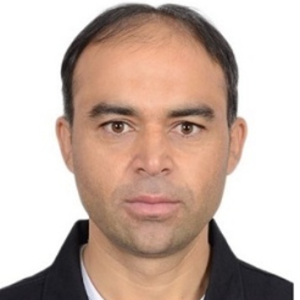Title : Pathogenesis of SARS-CoV-2-Mycobacterium tuberculosis coinfection, their prevention, and treatment
Abstract:
Coronavirus disease-2019 (COVID-19), caused by SARS-CoV-2, is an infectious disease that poses severe threats to global public health and significant economic losses. The COVID-19 global burden is rapidly increasing, with over 246.53 million COVID-19 cases and 49.97 million deaths reported in the WHO 2021 report. People with compromised immunity, such as tuberculosis (TB) patients, are highly exposed to severe COVID-19. Both COVID-19 and TB diseases spread primarily through respiratory droplets from an infected person to a healthy person, which may cause pneumonia and cytokine storms, leading to severe respiratory disorders. The COVID-19-TB coinfection could be fatal, exacerbating the current COVID-19 pandemic apart from cellular immune deficiency, coagulation activation, myocardial infarction, and other organ dysfunction. This study aimed to assess the pathogenesis of SARS-CoV-2-Mycobacterium tuberculosis Coinfections. We briefly overview COVID19-TB coinfection and discuss SARS-CoV-2 host cellular receptors and pathogenesis. In addition, we discuss M. tuberculosis host cellular receptors and pathogenesis. Moreover, we highlight the impact of SARS-CoV-2 on TB patients and the pathological pathways that connect SARS-CoV-2 and M. tuberculosis infection. Further, we discuss the impact of BCG vaccination on SARS-CoV-2 cases coinfected with M. tuberculosis and the diagnostic challenges associated with the coinfection.
National Health Commission of the People’s Republic of China has recommended certain TCM formulas, namely Jinhua Qinggan granule (JHQGG), Lianhua Qingwen granule (LHQWG), Qingfei Paidu decoction (QFPDD), Xuanfei Baidu granule (XFBD), Xuebijing injection (XBJ), and Huashi Baidu granule (HSBD) for treating COVID-19 infected individuals. Among these six TCM formulas, JHQGG and LHQWG effectively treated mild/moderate and severe COVID-19 infections. XFBD therapy is recommended for mild COVID-19 infections, while XBJ and HSBD effectively treat severe COVID-19 infections. The internationalization of TCM faces many challenges due to the absence of a clinical efficacy evaluation system, insufficient research evidence, and a lack of customer trust across the globe. Therefore, evidence-based research is crucial in battling this infectious disease. This review summarizes SARS-CoV-2 pathogenesis and the history of TCM used to treat various viral epidemics, with a focus on six TCM formulas. Based on the evidence, we also dis- cuss the composition of various TCM formulas, their underlying therapeutic mechanisms, and their role in curing COVID-19 infections. Furthermore, we highlighted the efficacy and side effects of single prescriptions used in TCM formulas.
What will audience learn from your presentation?
In this presentation, I will discuss the pathogenesis of SARS-CoV-2-M. tuberculosis coinfections, SARS-CoV-2 host cellular receptors, and M. tuberculosis host cellular receptors. I will also highlight the impact of SARS-CoV-2 on TB patients and the pathological pathways that connect SARS-CoV-2 and M. tuberculosis infection. Further, I will discuss the impact of BCG vaccination on SARS-CoV-2 cases coinfected with M. tuberculosis and the diagnostic challenges associated with the coinfection. Moreover, I will highlight the importance of different Chinese Traditional Medicines (TCMs) in the effective treatment of COVID-19 patients. This will help the audience to understand SARS-CoV-2 and M. tuberculosis infection process and their prevention and possible treatment.



